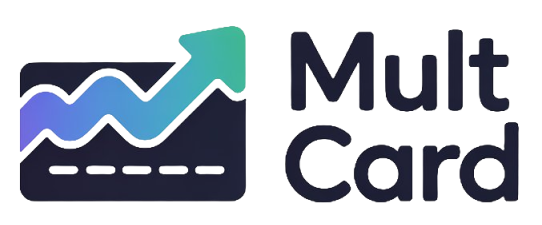Navigating the world of finance can sometimes feel complex, but securing a personal loan has become more accessible than ever, thanks to the digital landscape. The process of getting a personal loan online offers a level of convenience and speed that traditional methods often can’t match, allowing you to manage unexpected expenses or fund significant life events from the comfort of your home.
This streamlined approach empowers you to compare options and understand terms without the pressure of a face-to-face meeting. It’s about putting financial tools at your fingertips, but success hinges on being well-informed. Understanding the steps involved, from initial assessment to final approval, is the key to a smooth and beneficial borrowing experience.
Understanding the Core of Online Personal Loans
Before diving into the application process, it’s essential to grasp what an online personal loan is and how it functions. This foundational knowledge will help you make more confident decisions as you explore your options. Think of it as building a map before you start your journey.
What Exactly Are They and How Do They Work?
A personal loan is a type of installment loan, meaning you borrow a lump sum of money and pay it back in fixed monthly payments over a set period. Unlike a mortgage or auto loan, most personal loans are unsecured. This means you don’t have to put up collateral, like your house or car, to get the funds. Lenders approve unsecured loans based on your creditworthiness, which includes factors like your credit history, income, and debt levels.
The online process digitizes this entire experience. You apply through a lender’s website or app, submit documents electronically, and, if approved, receive the funds directly into your bank account. Repayments are also typically handled online through automatic debits or a payment portal.
Common Uses for a Personal Loan
One of the main appeals of a personal loan is its flexibility. The funds can be used for a wide range of purposes, offering a solution for various financial situations. Some common uses include:
- Debt Consolidation: Combining multiple high-interest debts, such as credit card balances, into a single loan with a potentially lower interest rate. This can simplify your monthly payments and may help you pay off debt faster.
- Home Improvements: Financing renovations, repairs, or upgrades to your property without needing to take out a home equity loan.
- Major Life Events: Covering the costs associated with a wedding, a new baby, or even moving expenses.
- Unexpected Expenses: Handling medical emergencies, urgent car repairs, or other unforeseen costs that your savings might not cover.
Preparing Your Application: A Step-by-Step Approach
A successful loan application begins long before you fill out the first form. Proper preparation not only increases your chances of approval but also ensures you’re borrowing responsibly. Taking the time to get your financial house in order is a crucial first step.
Assessing Your Financial Health
Start with an honest look at your budget. Understand your monthly income and expenses to determine how much you can comfortably afford to repay each month. Consider your debt-to-income (DTI) ratio, which is your total monthly debt payments divided by your gross monthly income. Lenders use this figure to gauge your ability to manage new debt, and a lower DTI is generally more favorable.
Gathering Necessary Documentation
Online lenders still need to verify your identity and income. Having your documents ready can significantly speed up the application process. While requirements vary by lender, you should generally prepare to provide:
- Proof of Identity: A government-issued photo ID, such as a driver’s license or passport.
- Proof of Address: A recent utility bill or bank statement with your name and address.
- Proof of Income: Recent pay stubs, bank statements, or tax returns (like W-2s or 1099s).
Understanding Your Credit Score’s Role
Your credit score is one of the most significant factors in a lender’s decision. It’s a numerical representation of your credit history and reliability as a borrower. A higher score often leads to better loan offers with lower interest rates. It’s a good practice to check your credit report before applying. You can often get a free copy from major credit bureaus. Review it for any errors and see where you stand. Knowing your score helps you identify lenders who cater to your credit profile.
Navigating the Online Application Process
Once you are prepared, you can begin exploring the digital marketplace for a loan that fits your needs. The online environment makes it simple to compare lenders and find transparent information to guide your choice.
Finding and Comparing Lenders
The internet is home to a vast number of lenders, including traditional banks, credit unions, and online-only fintech companies. Don’t settle on the first offer you see. Take time to compare several lenders, paying close attention to their interest rate ranges, loan amounts, repayment terms, and any associated fees. Reading customer reviews can also provide insight into their service and reliability.
The Pre-Qualification Step
Many online lenders offer a pre-qualification process. This is a preliminary step where you provide basic financial information, and the lender gives you an idea of the loan amount and interest rate you might qualify for. The best part is that pre-qualification typically uses a soft credit check, which does not impact your credit score. It’s an excellent way to shop around and compare potential offers without any commitment or negative effect on your credit.
Submitting the Formal Application
After you’ve chosen a lender and a loan offer that works for you, you’ll proceed to the formal application. This is a more detailed process where you will submit the documents you gathered earlier. At this stage, the lender will perform a hard credit inquiry, which will be recorded on your credit report. It’s important to be accurate and truthful on your application to avoid any delays or denials.
What to Look for in a Loan Offer
An approval is exciting, but it’s vital to carefully review the loan agreement before you accept it. The details within this document will define your financial commitment for the life of the loan. Understanding these terms is non-negotiable.
Decoding Interest Rates and APR
The interest rate is the cost of borrowing the money, expressed as a percentage. However, the more important figure to look at is the Annual Percentage Rate (APR). The APR includes the interest rate plus any additional fees, such as origination fees. It provides a more complete picture of the loan’s total cost, making it the best tool for an apples-to-apples comparison between different loan offers.
Understanding Loan Terms and Fees
The loan term is the length of time you have to repay the loan, often ranging from two to seven years. A longer term will result in lower monthly payments, but you’ll pay more in total interest over time. A shorter term means higher monthly payments but less interest paid overall. Also, be aware of any potential fees, such as:
- Origination Fees: A fee for processing the loan, often deducted from the loan amount before you receive it.
- Late Payment Fees: A penalty charged if you miss a payment due date.
- Prepayment Penalties: A fee some lenders charge if you pay off your loan early. Many online lenders do not have these, which is a positive feature.
After You’re Approved: Managing Your Loan Responsibly
Securing the loan is just the beginning. The final and most important phase is managing your repayment responsibly to maintain good financial standing and build a positive credit history.
Once you sign the loan agreement, the lender will disburse the funds, typically via a direct deposit into your bank account. This can happen very quickly, sometimes within one business day. From there, your repayment schedule begins. The most effective way to manage your loan is to set up automatic payments. This ensures you never miss a due date, helping you avoid late fees and protect your credit score. By staying organized and committed to your repayment plan, you can successfully leverage a personal loan as a tool for achieving your financial goals.


